|
“I wonder if the snow loves the trees and fields, that it kisses them so gently? And then it covers them up snug, you know, with a white quilt; and perhaps it says "Go to sleep, darlings, till the summer comes again.” ― Lewis Carroll The spring and summer is quite a hectic time. But then comes the golden light and slower pace of autumn, and finally winter. Settled into the muffled contemplation of snow, you can't but help think back upon the year that was... and then, with a faithful heart, look forward to the approaching boisterous season. Winter makes a quiet bridge between one year and another...
0 Comments
 This year we hosted a Christmas Eve dinner with some close friends to round out the holiday table. I decided that it was the perfect time to prepare my very first goose. ever. Not to fear though... this goose was soooo amazing!! It was like the very best beef filet wrapped in the juiciest bacon you've ever had. The meat was a wonderful, flavorful medium-rare and the skin was crispy with just the right amount of fat remaining to make it better than any other crispy animal fat I've ever enjoyed. If you've never had goose, you're really missing out. Here's the story of how we got that awesome beast on the table: We start with a hunt for recipes of roasted goose perfection. There are two places that I go for absolute authoritative advice for cooking when it really counts: Christopher Kimball of America's Test Kitchen (or Cooks Illustrated/Cooks Country) and Hank Shaw of Hunter, Angler, Gardener, Cook fame. Hank will give me the in's and out's of wild food deliciousness (especially waterfowl), and Kimball will tell me exactly why it works (after testing a recipe 10 ways from Sunday). I also consulted FoodNetwork UK since Roasted Goose is still a traditional British Christmas meal. The first thing I discovered is that you're a complete knucklehead if you cook your goose (or duck) _beyond medium rare. Ducks and geese are red meat birds – meaning the breasts of both need to be served pink. I say it all the time: ducks are not chickens; so it follows that goose is not turkey. OK... now we have more advice than we can shake a stick at and an almost 13lb free-range, all natural goose to cook for 6 people. I took everyone's expert recommendations to heart and created my own recipe (I know you saw it coming). The highlights I gleaned from the recipes were as follows: FoodNetwork UK said to brine the goose for at least 24 hours. I went with a basic brine (1 part sea salt, 1 part brown sugar). And also followed their advice to the letter about stuffing the bird with fruit before roasting. Kimball said that I should air-dry the goose in the refrigerator for 24 hours in order to tighten the skin so that during roasting the fat will be squeezed out. I neglected to do the boiling water dip first but I had totally intended to - I just got disorganized in the hubbub of preparing dinner. Hank said, in his guest post at Simply Recipes, that I would better represent the Lord of the Marsh with a medium-rare breast and well roasted legs and wings. So he advises roasting the goose for a bit, then slicing off the whole breast to finish searing it in a pan once the legs are done. That way I'll still have a nice roasted flavor on the whole goose, crispy skin, and properly pink breast meat. He also has a superb photo tour for prepping the goose that I found very helpful. We didn't take lot of pictures because we were pretty busy bustling about getting everything ready for dinner but here's the one good picture we did manage to grab:  Twitterpic: @warrenellis Hurricane Sandy has made landfall on the East Coast and it's colliding with a NorEaster to wreak havoc over 7 states. Most of us are getting heavy gushers of rain, and if you're anywhere near the waterfront then you're experiencing amazing storm surge and crippling flooding. Western Maryland, parts of Virginia and West Virginia are having white out blizzard conditions and at the time of this writing there was already 3 feet of snow in WV. Last night and this morning in Southern Maryland we had buckets of rain and some high winds. for the last couple of hours we've had a lull in the wind. The worst is supposed to arrive at 2am tomorrow morning. While the wind was down and I didn't have to worry about sideways rain, I went outside to take some video. It's not the best quality since I have my phone shoved in a ziplock baggie and it's also getting speckled by raindrops.- plus I'm tromping around in my rubber boots making it a bit unsteady. But so far, we've not sustained any damage. There hasn't been (knock wood) any trees down in my yard or large branches. We heard some loud cracking and crashing in the neighboring woods, but there isn't anything that will be crushed in those parts of the property. I'm happy to say that these video's are very boring :) Here's the front yard: Then I went back to the barnyard to take some video of the animals. The waterfowl are acting like it's just any other day (rain? what rain?). They're staying inside the small duckyard and not venturing out into the rest of the barnyard, but otherwise they're acting like it's nothing to worry about. The Muscovy are less thrilled and look a little miserable out there with their necks scrunched down just sitting like a bunch of dummies in the rain. Some of my smarter Muscovy hens are hanging out inside their loft staying dry and, clearly, much warmer. The chickens are pretty unhappy about the deluge. They're mostly keeping inside the henhouse. A few of the juvenile girls are making runs back in forth from one protected area to another, and a few brave souls are going on with business as normal and looking like a bunch of drowned rats. Here's the barnyard:  AP News Pic This is why I like to visit the beach but I don't want to live at the beach. This nasty mess is a combination of surf foam and wet sand flying around like cotton candy and coating everything in sight. Gross. I'll keep you posted as new pictures or video are taken. Like I said, so far we're doing quite well, just a lot wet and without power but I think we're set to deal with that just fine... at least until we run out of beer. Sharpsburg, Maryland is a picturesque landscape of rolling hills and farmland with a very charming and nostalgic downtown that looks like it was lifted directly from a snapshot of the 1800's. The town is near the West Virginia and Pennsylvania borders, tucked in beside the Antietam Battlefield and Historic Harper’s Ferry; it's a rather beautiful and bucolic 2 1/2 hour drive from my tiny farm in Southern Maryland.  Speaking of charming, this swap is hosted at Green Hill Farm by Erin Moshier, a delightfully sunny gal with an infectious smile. Twice each year (summer and fall) she hosts a fun poultry swap at her family farm just minutes from the center of downtown Sharpsburg. But once you turn down that gravel road leading to the poultry barn and the horse stables where curious pony's whinny hello's over the fence, you feel miles and miles from anything but the countryside. My MooseHerders and I arrived early in the morning with a modest selection of ducks, chickens and geese and quickly put up our canopy, table and portable poultry pen. The feathered flock was soon nibbling on Erin's pasture and getting rehydrated after a long car ride. Folks were milling about prior to the 8am "selling start time" and were very curious about what poultry or farm related product each vendor was preparing to sell out of that day. I had 2 extra Holderread Penciled Indian Runner boys from my spring order I was preparing to sell. Those birds were as nervous as ever and abjectly refused to stand at ease; they chose instead to peer nervously at their growing audience and sort of dance from foot to foot like a 5 year old who needs to use the potty. The young Sebstapol goose was taking everything in stride (I could have sold him 10 times over!), and my affable juvenile Welsh Harlequin was attempting to charm the chickens into being his pals for the day (since he was raised by a chicken mama and didn't know he was a duck) and those Marans cockerels were not having any of it. All in all it was shaping up to be an interesting day at my booth. Browsers stopped by to ask over and over again what the heck kind of birds those Penciled Indian Runners were ("are those some kind of goose?") and before too long a somber and truly gentlemanly young man hailing from West-By-God-Virginia quietly asked me if I'd be willing to sell him those lovely Runner ducks (he said it just like that). I was more than happy to negotiate a price for that gracious, young aspiring farmer and help him carry his new waterfowl to his car. Such a peach, I wish him well. Tons of folks stopped by to chat with me at length, get advice about waterfowl, and tell me about their own flock. I gave out many business cards and collected a few as well. What a great place to network! There was so much to see and hear at the swap: Craftsman selling poultry housing and nesting equipment, crafty-crafter ladies peddling so many wonderful handhewn wares, local feed stores, chicken farmers, duck farmers, guinea keets, peacocks, muscovy, turkeys, pheasants, chukar, bunnies, goats, and pigs (ADORABLE)... I even saw guinea pigs! And - holy moly - Someone had the nerve to bring some gorgeous German Shorthair puppies... O My GOODNESS! Those hounds were absolutely snugglicious! I barely contained myself at that booth. I reminded my hard farmrgirl heart that hunting dogs and ducks were not the best bedfellows. *sigh*  We had such a good time at the swap! There was live music and great giveaways. I bought a few things, sold a few things and met a bunch of interesting and fun folks. You just never know who you might make a good friend out of until you go to one of these events! For the upcoming spring/summer swap I'll be loaded up with hatching eggs, eating eggs, baby ducks, geese and chickens to sell in the early summer at Erin's next poultry swap... this event is too good to pass up! I hope you'll join us all next year - especially at the early market when all those spring hatches will be ready. For more information or to be added to her mailing list, Erin's blog can be found here: http://mdpoultryswap.blogspot.com/. Don't forget: When you're in the area be sure to have lunch in one of the local establishments. We did (twice - once in Boonsboro) and were NOT disappointed mmmmm... good!  On Easter Sunday 3 little baby goslings were coaxed from their satin shells into the world. My mama Muscovy, newly named Gåsmer or "Mother Goose" in Swedish, has been such a wonderful broody, and now caretaker, of these fat Buddha goose babies. Of the 6 eggs I put under her she hatched 3, and based on the notations Kim wrote on the shell, I now have 2 Sebastopol and 1 American Blue goslings. It would appear that the golden baby pictured above is a white Sebbie and one of the dark & yellow fluffers is a Saddleback Sebbie. The other dark gosling is my new little American Blue. Miss Gasmer & her troup All 3 are very sweet and friendly. When I open the door of their little house in the morning they meet me right away with their tiny necks craned out and their little baby goosey sounds peep peep peeping through. One especially, my tiny Curious George, really does like to snuggle a moment every morning and chew on my hair. GoldenChild is the least happy to be picked up but, honestly, doesn't seem to mind that much. I've been handling them quite a bit to keep them friendly, although I'm not sure, in my experience, that there's a true correlation to the amount of handling they get as babies and their level of friendliness as adults. I'll say for sure that some handling is helpful but once they mature I see a big difference between behavior as a baby compared to their level of trust as an adult - in opposing directions most often. One thing remains constant: their response to the sound of my voice. All my birds respond positively to the sound of my voice but each respond differently to my nearness. So, all that said, I think a moderate amount of stress-free handling is important when they're small, but don't expect them to still be eating out of your hand in 2 months.  I haven't determined the sex of these fluffers yet. I did an initial gender evaluation but it was inconclusive so I'll have to do another after a short instructive video viewing at the Metzer Farms website. I'm hoping that my American Blue is a girl so that I can finally have a pair... unfortunately, one of my 2 boys will have to find a new home. Sad but very necessary for pair bonding. I'm excited that the babies are finally here, healthy and happy. I'll keep you posted on their progress!  It's been nearly a fortnight, so this evening I candled my goose eggs for the second time since setting them in the incubator. For those of you unfamiliar with the term, "candling" is a method which bird breeders use to verify that eggs incubated for hatching are fertile. To candle an egg, a very bright light is held behind it to illuminate the shape of the embryo inside the shell. Fertility is determined based on the color, shape, and opacity of the contents. When no veining is present and the egg is very bright inside, we call this a "clear" egg, meaning it's unfertilized or otherwise not viable. It all usually starts with a dark spot, which grows veins, then the little baby inside begins to take shape and you can often see it moving when you shine your light on it. Here are pictures of the eggs. These are not my best work, I haven't gotten the hang of ultra low light photography. At least they're not blurry, which requires a lot of steadiness and holding of breath for such a dark room.
Shipping is very hard on hatching eggs. The post office is fairly rough with the boxes and no matter how well you pack them, sometimes you end up with broken eggs or detached air-sacks, or otherwise "scrambled" eggs on the delivery side. Plus, it's impossible to tell whether an egg is fertile until it's been incubated for about a week.
The right temperature and humidity conditions must be reached before all the eggs in a clutch sort of "click on" and begin growing. This ensures that when the hen finally lays her last egg for a clutch that they all hatch within 24 hours of each other. An egg laid 6 days prior to her setting the nest begins growing at exactly the same time as the one she just laid. Right up until those perfect conditions are met, a fertile egg looks exactly like an infertile egg. Many people believe that a blood spot on the yolk is an indication, that only means that a bit of blood was trapped inside the egg when it was being formed... hens with no male to fertilize eggs lay those just as often as the ladies who have a man around. I'm crossing my fingers on those two questionable American Blues. I've never hatched goose eggs before so I'm going off of past experience with chicken, duck and Muscovy eggs. Speaking of which, that Muscovy girl that looked and sounded like she was considering setting a nest is a confirmed broody. She's been keeping a couple of wooden eggs warmed up and has created a beautiful nest for them, lined with downy feathers pulled from her own chest. Tonight I took these goose eggs out of the incubator and put them under her warm bottom. If they're gonna hatch at all, they'll do it under her expert care. Then she can raise those babies instead of me. I love babies but everyone will benefit from this pretty little Muscovy doing what she does best.  Today my American Blue Goose hatching eggs arrived from my friend Kim Kelly! She even tossed in a couple of bonus Sebastopol eggs... This will be my first time attempting to artificially incubate goose eggs. I have a Muscovy girl who looks like she's giving a great deal of consideration to going broody but hasn't really committed herself to it full time yet. That's a bummer because I was hoping to remove the wooden eggs from her nest and slide these wonderful works of goose art right in under that warm, feathered bum of hers. Wouldn't she have been pleased to sit 5 days less than her own would've confined her? Oh well... I can certainly put that fluffy bottom to work on other duties once she gets herself settled. These eggs are HUGE! I had to take some pictures just for posterity. I knew they were big but until you actually hold one...
And, of course, there will be a meeeellion photos of the babies once they hatch out. Who doesn't love baby goose breath?
|
About FarmrgirlSmall town Calif. farm-girl leaves the ranch behind for many years of adventure at sea, travels the world, then moves to Washington DC in 2007 where she finds the perfect homestead to settle down: acres of secluded Southern Maryland woods where she goes granola by raising her quality of life, Mastiffs, ducks, chickens, and tomatoes {& one Bengal kitty}... sustainably.
Our Farm News Delivered Directly to Your Inbox Once a Month.
My Blog Archives
June 2024
Stuff I've blogged about
All
Prices In Real Time |
Moose Manor Farms, LLC | Moyaone Reserve, Accokeek, Maryland | (301) 678- 3533 | All Rights Reserved 2022 | NPIP 51-582 | Newsletter | Contact





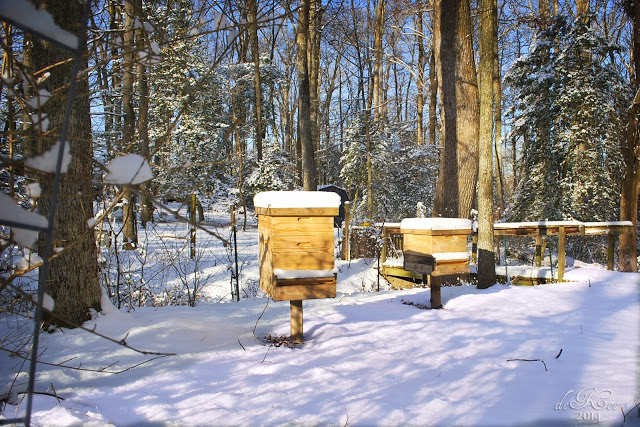



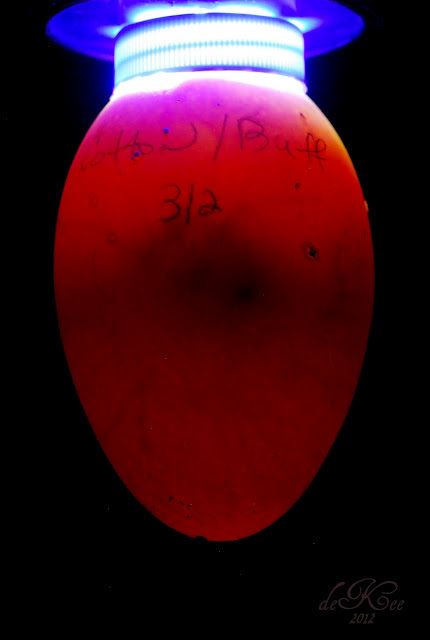
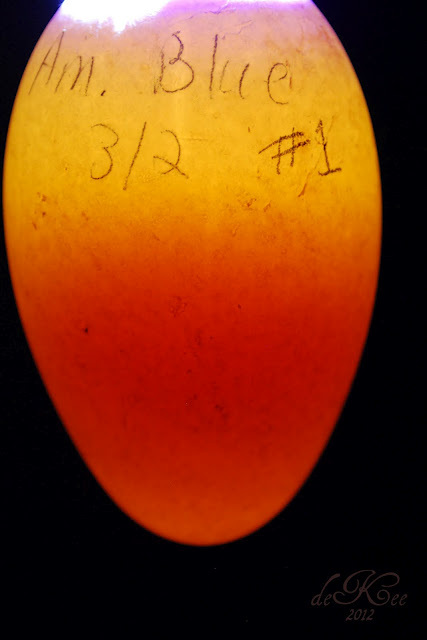

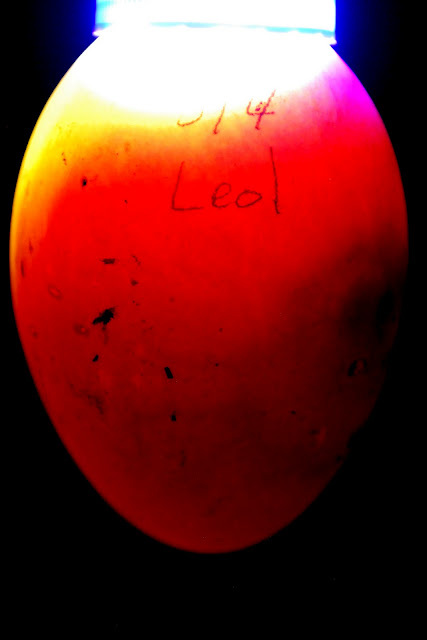

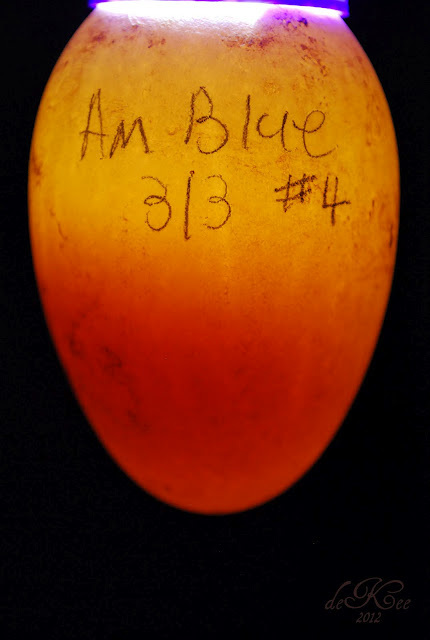


 RSS Feed
RSS Feed



